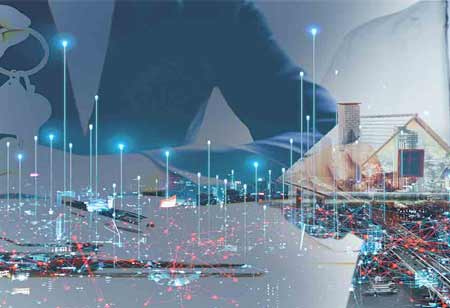Thank you for Subscribing to Energy Business Review Weekly Brief
Emerging Technology in Hydraulic Fracturing
In 2022, wells need to complete construction.

By
Energy Business Review | Monday, February 19, 2024
Stay ahead of the industry with exclusive feature stories on the top companies, expert insights and the latest news delivered straight to your inbox. Subscribe today.
Recent advances in hydraulic fracking can offset challenges in efficient fracking processes.
FREMONT, CA: In 2022, wells need to complete construction. The demand for frac sand is increasing but sand mines, mostly in-basin, suffer from low prices and maintenance. Sand banks may not be able to meet construction needs to complete well construction by 2022. Pumps are also in short supply. Rental services have limited supply of pumps. Operators are reusing old pumps that need maintenance and upgrading. Projects are, additionally, spending vast resources in water and sand to frac a two-mile well.
The following technologies make fracking more efficient:
Near-field connectivity: to improve the flow of oil into horizontal wells. Acoustic pulses detect flow resistance in the near-wellbore region of a fracked well. The metric, near field connectivity index (NFCI) measures flow resistance along a horizontal well. NFCI numbers depend on the following:
The geology of the reservoir: Larger NFCI is generated in areas of brittle rocks. Ductile rocks give lesser numbers.
Proximity: Proximity of other wells can induce stresses that cause NFCI numbers to vary.
Diverter: A diverter or a limited entry frac build can boost NFCI values by 30 percent.
Sealed wellbore pressure monitoring (SWPM): The SWPM notifies operators when fractures spread out from a frac stage and reach the monitor well. The SWPM records pressure blips in the site. Operators compare the first blip against the volume of frac fluid pumped. This is called volume-to-first-response (VFR). The VFR figures out fracture geometry.
Operators use SWPM to identify if a depleted reservoir due to a pre-existing parent well affects growth of fractures.
Another goal can be to understand if reservoir depletion, due to a pre-existing parent well, can affect the growth of fractures. A new fracture tends to head toward a depleted portion of a reservoir.
Near-well strain: Strains in near-wells are detected with fiber-optic cables. Cables run along the well and are protected by a metal sheath. A laser beam passed through a fiber-optic cable along the horizontal well can detect reflections due to minute crimping or expansion. The condition of the cable shows when the well's geometry is altered by a change in well pressure during oil production.






